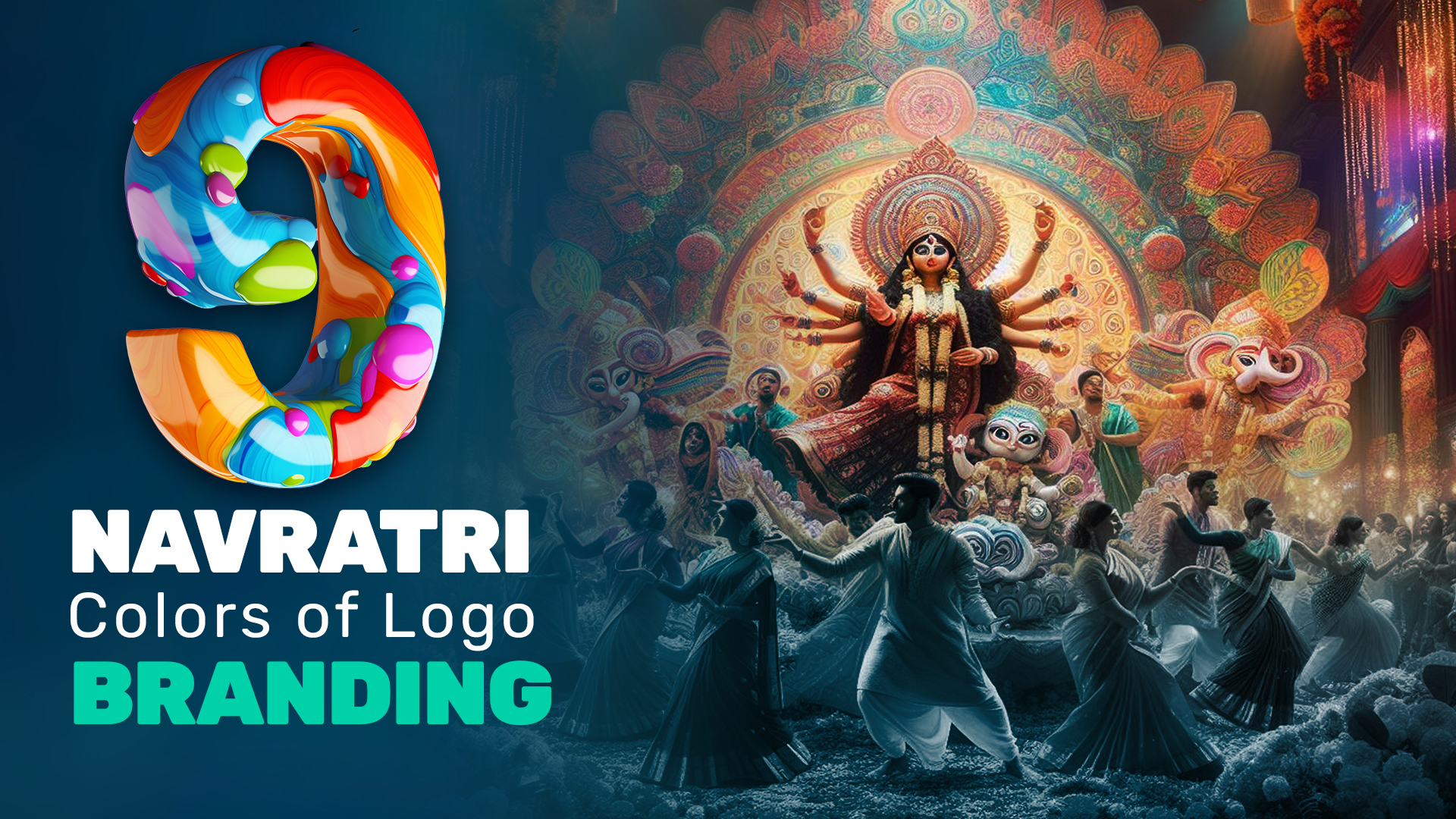In the world of branding, colour plays an undeniable role in shaping a brands identity, evoking emotions, and influencing consumer behaviour. When it comes to festivals, colours take on greater significance, with each hue carrying cultural, emotional, and psychological meaning. Navratri colours , a vibrant nine-day Hindu festival dedicated to the goddess Durga, celebrates nine different colours, each symbolising a distinct virtue. These Navratri colours are not only spiritually meaningful but also find applications in modern branding strategies, where they help shape the visual language of brands.

Yellow: Symbolising Happiness and Optimism
The colour yellow is associated with positivity, energy, and joy. During Navratri, this colour is worn on the first day to invoke blessings of happiness and prosperity. In branding, yellow creates a sense of optimism and warmth that resonates with consumers, making them feel more inclined to trust and engage with a brand.
One prime example of yellow’s effectiveness in branding is Snapchat. This social media platform exudes happiness and optimism through its design and functionality. By focusing on lasting content—posts that disappear after 24 hours—Snapchat encourages users to capture and share moments without the pressure of perfection. Additionally, Snapchat’s dedication to personal connections—prioritising close friends over a wide audience—creates an environment of warmth and intimacy.
Incorporating yellow into branding can thus foster a sense of joy and connection. It invites consumers to engage with a brand in a carefree, joyful manner, much like the celebration of happiness on the first day of Navratri.

Green: Representing Growth and Prosperity
Green is the colour of life, renewal, and growth. On the second day of Navratri, people adorn green to seek blessings for personal and professional growth. Similarly, in the corporate world, green symbolises vitality, prosperity, and success, making it a popular choice for brands that align with health, well-being, and sustainability. Which can evoke a sense of renewed energy.
Tropicana, a brand synonymous with fresh, healthy fruit products, embodies this idea of growth and prosperity. Tropicana’s branding focuses on nature, wellness, and the idea of thriving through balanced nutrition. The brand’s emphasis on fresh-squeezed juices evokes an image of natural energy and vitality, which appeals to health-conscious consumers. Moreover, its vibrant green imagery suggests not only the freshness of the product but also the idea of continuous growth and flourishing. This aligns with the larger cultural theme of seeking prosperity and well-being, as seen on the second day of Navratri.
Incorporating green in brand logos and marketing materials can, therefore, symbolize a commitment to growth—both for the brand and for its consumers.

Grey: Representing Balance and Roundedness
Grey, while often understated, conveys a sense of balance, neutrality, and reliability. It may seem like a simple colour, but it has profound implications for a brand’s image, particularly for companies that wish to appear balanced and grounded in their approach.
An example is Wikipedia, the world’s largest online encyclopedia. With its neutral and factual tone, Wikipedia fosters a balanced emotional environment where users can explore diverse viewpoints and information. Grey, as a dominant color in its logo and interface, reflects the platform’s commitment to presenting knowledge in an unbiased, objective manner. By doing so, Wikipedia remains grounded in its mission of providing reliable, accessible information to all, much like the third day’s Navratri color that keeps one emotionally grounded and humble.
For brands, grey can convey a sense of authority, neutrality, and calm. It assures consumers that the brand is trustworthy and stable—a grounded presence in a fast-moving world.

Orange: Standing for Warmth and Enthusiasm
Orange is the color of warmth, energy, and enthusiasm. In the context of Navratri, orange represents courage and confidence, aligning with themes of empowerment. Brands that use orange in their identity often want to inspire excitement, creativity, and a sense of warmth among their consumers.
A brand that captures the essence of orange is Dunkin’. Known for its coffee and quick-service breakfasts, Dunkin’ creates an inviting and energetic atmosphere. Its bright orange and pink branding welcomes customers with warmth, while its focus on energising products like coffee reflects enthusiasm and excitement. Dunkin’s fast, friendly service adds to the overall sense of positivity and vigor. Much like the energising hue of orange on the fourth day of Navratri, Dunkin’ encourages customers to start their day with warmth and excitement.
Incorporating orange into branding can invoke feelings of friendliness, energy, and enthusiasm, creating a positive and lively brand experience.

White: Denoting Peace and Purity
White is a symbol of peace, purity, and serenity. In Navratri, the color white is worn to invoke inner peace and clarity of mind. Similarly, brands that utilize white in their logos often aim to project an image of purity, elegance, and simplicity.
Chanel, the iconic luxury fashion brand, is a prime example of how white can convey elegance and purity. Chanel’s minimalist designs, featuring clean lines and timeless silhouettes, evoke a sense of grace and serenity. The brand’s dedication to craftsmanship and understated luxury aligns with the purity and peace symbolised by white. Chanel’s branding reflects a deep sense of sophistication, much like the inner peace sought on the fifth day of Navratri.
White in branding can, therefore, represent simplicity, peace, and purity, aligning the brand with values of clarity and refinement.

Red: Symbolising Strength, Love, and Passion
Red is a powerful colour, representing strength, love, and passion. In Navratri, red is worn on the sixth day to embody courage and passion. Brands that use red in their logos often aim to evoke strong emotions, capturing attention and encouraging action.
H&M exemplifies the power of red in branding. As a global fashion retailer, H&M blends bold, trendy designs with accessible prices, making fashion available to a broad audience. The brand’s commitment to sustainability and ethical practices adds to its sense of passion for positive change. H&M’s emphasis on self-expression through fashion fosters a deep connection with its customers, inspiring creativity and individuality. This reflects the qualities of strength and passion that are celebrated on the sixth day of Navratri.
Red in branding can symbolise a brand’s boldness, confidence, and passion, creating a powerful emotional connection with consumers.

Royal Blue: Representing Calmness and Wisdom
Royal blue evokes feelings of calm, stability, and wisdom. On the seventh day of Navratri, this colour is worn to seek wisdom and understanding. Brands that incorporate royal blue in their identity often aim to convey reliability, trustworthiness, and experience.
Ford, one of the most trusted names in the automotive industry, uses royal blue to communicate its values of reliability, wisdom, and engineering excellence. With over a century of experience, Ford has built a reputation for crafting durable, well-engineered vehicles that prioritize safety and performance. The calming blue in Ford’s logo reinforces the idea of stability and dependability, ensuring consumers feel secure in their choice.
For brands, royal blue can communicate trust, calm, and wisdom, making it ideal for companies that want to project authority and reliability.

Pink: Signifying Love, Affection, and Nurturing
Pink is often associated with love, affection, and care. In Navratri, pink is worn to symbolize love and harmony, and brands that use pink often want to project a nurturing, caring image.
Nykaa, a leading beauty and wellness brand, embodies these qualities through its commitment to self-care and personal expression. Nykaa encourages individuals to embrace their unique beauty while nurturing their sense of self-worth. By offering a wide range of products for diverse needs, the brand fosters a sense of love and connection with its customers, going beyond cosmetics to promote overall well-being. The nurturing quality of pink, seen on the eighth day of Navratri, is deeply embedded in Nykaa’s brand philosophy.
Pink in branding can create an emotional connection with consumers, fostering feelings of love, care, and nurturing.

Purple: A Color of Ambition and Power
Purple is the colour of royalty, ambition, and power. On the ninth day of Navratri, purple is worn to embody dignity and self-respect. Brands that use purple often aim to project an image of luxury, ambition, and leadership.
Cadbury, with its iconic purple branding, stands as a symbol of ambition and indulgence in the chocolate industry. The deep purple hue conveys a sense of luxury and sophistication, while the brand’s strong market presence and commitment to quality reflect its ambition. Cadbury’s ability to create lasting emotional connections with consumers through indulgent experiences aligns with the commanding influence of purple seen during Navratri.
Incorporating purple into branding can evoke feelings of luxury, power, and ambition, positioning a brand as a leader in its industry.





